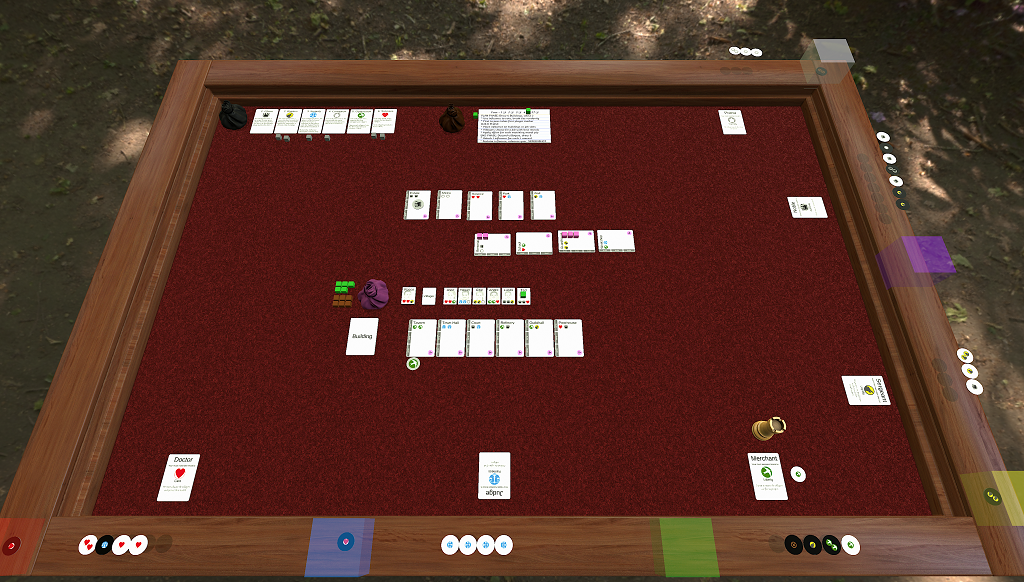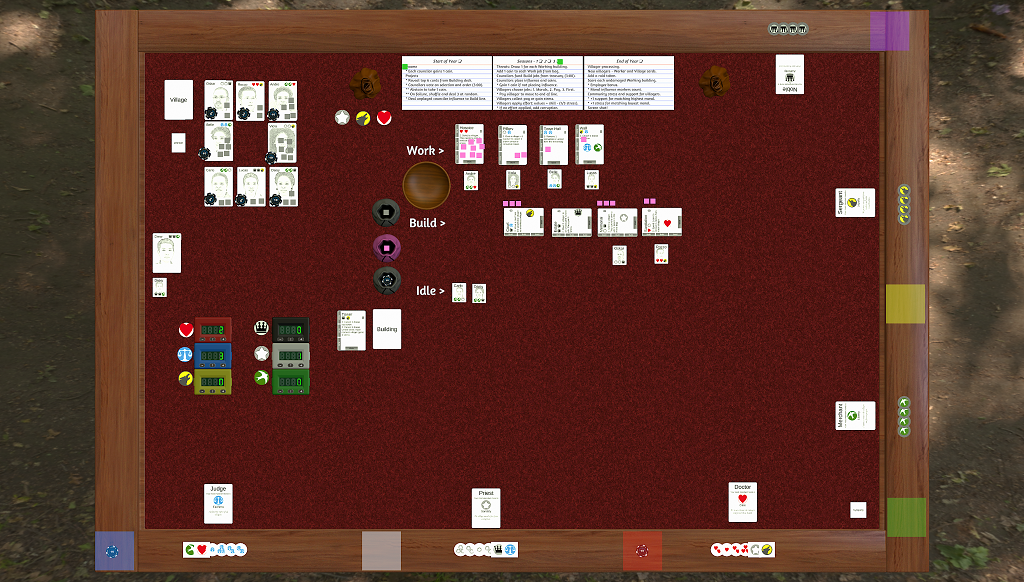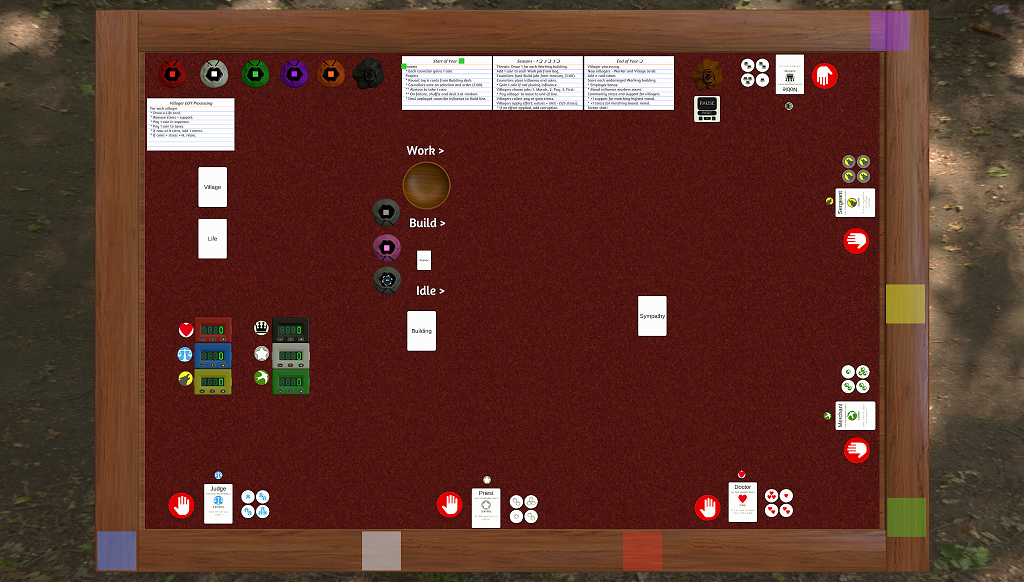Continuing my solo playtest with threats. Their impact is rather subtle so far, but that’s kind of intentional. The first reason is that until buildings are completed, nothing can be done about the threats. The second reason is that in the real world, humans tend to ignore threats until they cost too much to ignore: I want the players to argue about who will pay the cost to deal with the threats, when all they really want to do is make their own buildings.

Still, the threats need to be credible if they’re going to impact the game. I’m not sure I can determine their credibility in a solo playtest. I told Karen this morning that this game is getting harder and harder to solo playtest, because the decisions are becoming increasingly complex, even though the mechanisms are more elegant than they have ever been. This pleases me.
Also: At Protospiel Online, Amelie Le-Roche suggested that I try putting newly selected buildings at the front of the build line instead of the back. I’ve been pondering this. It means that if your building isn’t completed the year it’s selected, it will be much harder to complete it before the game ends. That sounds interesting.







